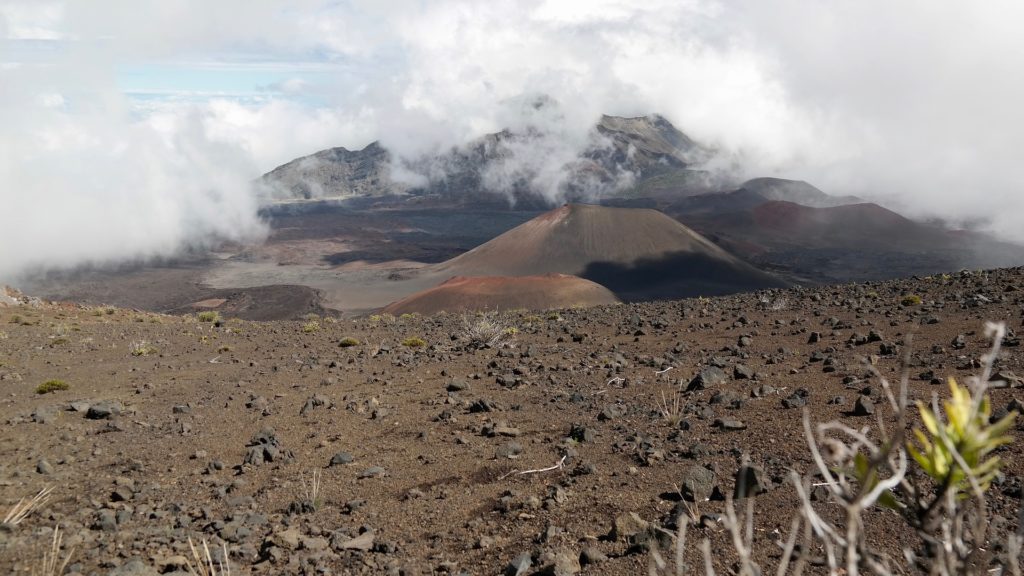Mauna Loa, the world’s largest active volcano, erupted for the first time in nearly four decades on Sunday. There’s been evidence that something was up for several months, but now that there’s an active eruption, what does that mean for Hawaii’s Big Island and could it affect your travel plans?
Until now, Mauna Loa was considered active and restless but not erupting as described by the US Geological Survey.
Even among “dormant” volcanoes there could be a sub-category for those that are “restless”—these are volcanoes that are not erupting, but that are experiencing some signs that magma is accumulating or moving beneath the surface. Mauna Loa, in Hawaiʻi, could qualify for this category, since it experiences ground inflation and earthquakes that are a testament to changes within the volcano’s magma chamber. So Mauna Loa is “active” and “restless” but not erupting—at least, not yet. It will at some point, which is why monitoring restless volcanoes is so vital for forecasting their behavior on timescales that are helpful to society.
In October, the increased number of earthquakes caused the National Park Service to close the Mauna Loa summit backcountry to visitors. The road and lookout remained open until the eruption on Sunday.
The eruption is currently limited to the summit of Mauna Loa. However, residents are advised about the possibility of ash and volcanic gasses in the air. Those with respiratory conditions are told to stay inside and cover their mouth and nose when going outside.
At nighttime, the red glow of the caldera can currently be seen from as far away as Kona on the island’s west coast.
If you’ve visited Volcanoes National Park in recent years, you most likely drove around the Kilauea crater, which sits about 21 miles east of Mauna Loa. That area of the National Park is still open, but I’d keep an eye on their website if you’re planning a visit.
What does this mean in the larger sense if you have a trip to Hawaii planned in the next few weeks?
If you’re visiting any island except Hawaii (The Big Island), you should be fine.
However, if you’re going to Kona or Hilo, it might be a different trip than you planned. Flights need to avoid the volcano zone. At the moment, there are no flight cancellations to KOA (Kona), but some airlines are canceling interisland flights to ITO (Hilo). It’s best to check with your airline for the most recent information. I’d also suggest using a service like TripIt Pro to provide alerts about flight changes.
If the eruption stays limited to the crater, there shouldn’t be much disruption for a tourist planning to stay at one of the beachfront resorts on the Kailua-Kona side of the island.
That said, things can change quickly with volcanic eruptions, as with any natural event. Here are some places to get the most up-to-date information.
Hawaii Volcanoes National Park
- Twitter – https://twitter.com/Volcanoes_NPS
- Website – https://www.nps.gov/havo/index.htm
US Geological Survey – Volcano Hazard
- Website – https://www.usgs.gov/programs/VHP
- Mauna Loa Updates – https://www.usgs.gov/volcanoes/mauna-loa/volcano-updates
The USGS also provides several webcams if you want to look at the volcano. Here’s a thermal picture taken on Sunday evening.
If you have an upcoming trip, it’s frustrating that a volcano can throw a wrench into your plans. However, remember some people are hoping that the eruption stays limited to the summit and there’s no need to evacuate their homes because of lava flows.
Want to comment on this post? Great! Read this first to help ensure it gets approved.
Want to sponsor a post, write something for Your Mileage May Vary, or put ads on our site? Click here for more info.
Like this post? Please share it! We have plenty more just like it and would love it if you decided to hang around and sign up to get emailed notifications of when we post.
Whether you’ve read our articles before or this is the first time you’re stopping by, we’re really glad you’re here and hope you come back to visit again!
This post first appeared on Your Mileage May Vary
Join our mailing list to receive the latest news and updates from our team.

